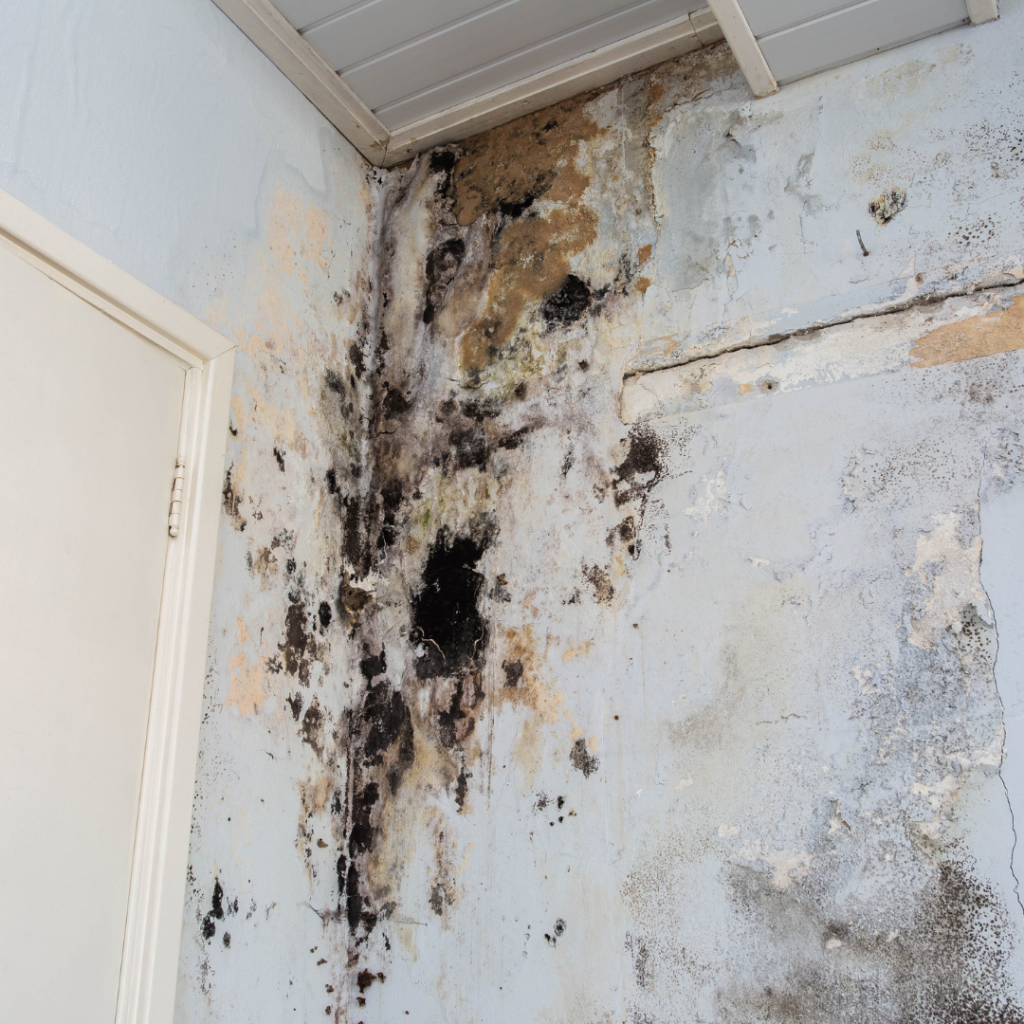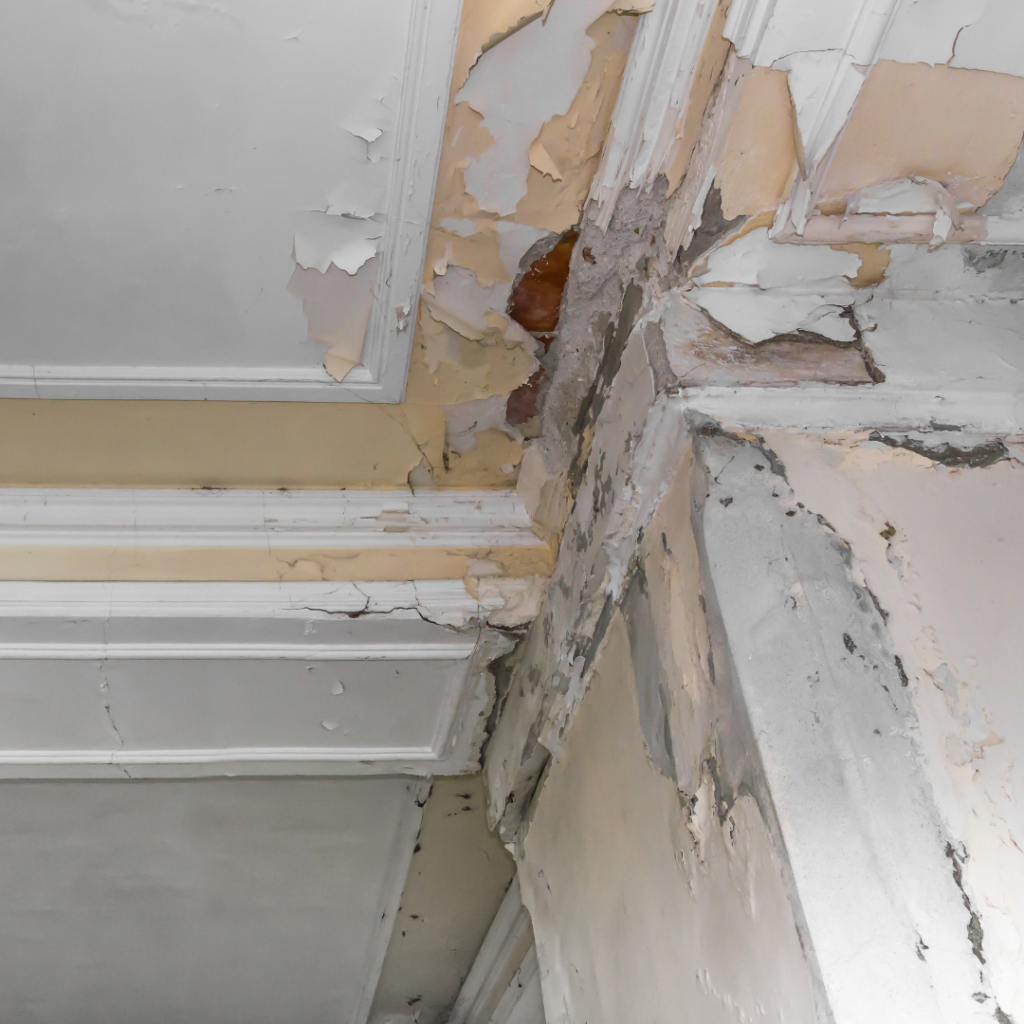Water leakage is one of the most common issues in residential and commercial buildings.
It weakens structures, damages interiors, and promotes Mold growth.
Understanding the root causes can help you prevent costly repairs and keep your building safe
1. Poor Waterproofing During Construction
Waterproofing is critical during construction.
If ignored or done poorly, it becomes the biggest reason for water seepage.
Many builders skip using proper waterproofing materials to reduce costs.
Walls, terraces, and basements without effective barriers are highly vulnerable.
Water easily penetrates porous surfaces, especially during the rainy season.
Over time, moisture accumulates and leads to paint peeling, wall dampness, and Mold growth.
The damage often becomes visible months or even years later.
Waterproofing should be done to avoid this using high-quality materials like liquid membranes, elastomeric coatings, or crystalline compounds.
The foundation, roof, bathrooms, balconies, and water tanks are key areas to focus on. Periodic inspection is essential—even buildings with good waterproofing may develop issues due to wear and tear.
A proactive approach during and after construction saves significant repair costs later.
2. Cracks in Walls or Roof

Cracks are a direct gateway for water to enter the building structure.
They may occur due to settling, thermal expansion, structural issues, or poor workmanship.
Hairline cracks often go unnoticed but gradually widen with time.
Rainwater or moisture seeps through these gaps, causing dampness and efflorescence.
Cracks in the roof are especially dangerous as they allow water to flow straight into slabs and beams.
This accelerates corrosion in steel reinforcement and weakens the structure.
Regular wall inspections and timely repairs are necessary.
Seal minor cracks with appropriate sealants or polymer-modified mortar.
For wider or structural cracks, call a professional to assess the root cause. Don’t delay repairs—cracks only get worse with time and exposure.
3. Faulty Plumbing
Leaking pipes, poor joints, and old plumbing lines are another major cause of water leakage.
Water lines concealed inside walls and floors can leak silently for months.
Over time, they cause plaster damage, wall dampness, ceiling stains, and Mold.
In severe cases, leaking pipes lead to the collapse of ceilings or soaked beams.
Common signs include a sudden increase in water bills, wet patches, and foul smells.
Old buildings with galvanised pipes are especially vulnerable due to corrosion.
Use PEX or PVC pipes with secure joints for durability.
Schedule routine plumbing checks to detect and fix hidden leaks before they escalate.
Also, ensure water tanks and bathroom fittings are sealed properly to avoid seepage.
4. Damaged Roof or Terrace

Roofs and terraces face constant exposure to sun, rain, and temperature changes.
This causes surface cracks, wear and tear, and water stagnation.
If drainage is not proper, standing water seeps through small cracks and enters the slab.
Over time, this weakens the concrete and corrodes steel reinforcements.
Waterproofing membranes, if not maintained, degrade and lose effectiveness.
Terrace gardens and planters also add to moisture retention if not insulated well.
To prevent roof-related leakage:
- Inspect roofs before and after monsoon
- Ensure proper slope and drainage
- Apply high-quality waterproofing solutions every 3–5 years
Proactive maintenance saves buildings from serious internal damage
5. Blocked Drainage or Gutters
Blocked drainage is often overlooked but leads to significant water damage.
Debris, leaves, and dust clog gutters and prevent water flow.
As a result, rainwater overflows and accumulates around the building.
This leads to seepage in walls, foundations, and basements.
In high-rise buildings, blocked downpipes can cause water to enter balconies and inner walls.
Clean all gutters, drainpipes, and scuppers regularly.
Install leaf guards and drain covers to prevent clogging.
Ensure the drainage system channels water away from the structure. Small actions like this prevent massive damage over time.
Signs of Water Leakage to Watch For
- Peeling paint or wallpaper
- Musty smell indoors
- Damp walls or ceilings
- White salt deposits (efflorescence)
- Mold or fungus growth
- Cracks with moisture trails
Spotting these early signs can help avoid structural damage
How to Prevent Water Leakage in Buildings
- Ensure proper waterproofing during construction
- Conduct regular inspections of the roof, walls, and plumbing
- Use quality materials and fittings
- Fix cracks and leaks promptly
- Maintain drainage and gutter systems
Preventive maintenance is more cost-effective than repairs.
When to Call a Professional
Call a building repair or waterproofing expert if:
- You notice recurring damp patches
- There’s visible Mold on the ceilings or walls
- Cracks are widening
- Leakage persists after basic repairs
Professional assessment helps identify the exact source and long-term solution
Click here to get free consultations
- Why Retrofitting is Important for Buildings: Structural Strengthening, Waterproofing & Building Repairs with Zindus
- Seal the Deal: Why Terrace Waterproofing is the Smartest Investment for Old Buildings
- Say Goodbye to Damp Walls! Weatherproof Painting & Waterproofing Secrets Revealed
- Rehabilitation Redefined | Strengthen, Beautify & Protect Old Structures – Zindus
- Revive Aging Buildings with Modern Waterproofing | Zindus

Great article! Water leakage is often underestimated until it causes major structural damage. One point I’d like to add — many leakages aren’t just due to poor maintenance, but also stem from unverified or improper land development at the foundational level.
If the land is in a low-lying, flood-prone, or improperly zoned area (like agricultural land sold as residential), it becomes a long-term risk for both water drainage and structural integrity.
That’s why platforms like http://www.mahabhoomi.site are so important. They help buyers verify land zoning, NA status, flood zones, and more — before any construction starts. Highly recommend checking it out if you’re in real estate or planning to invest in property. 💡
“Very informative article on water leakage issues! Just like in chess, where identifying the root cause of a mistake is the key to improvement, understanding the causes of building leakage helps in preventing bigger problems in the future. At SMCA Chess Academy, we believe in the same principle for training our students – identifying weaknesses and building strong strategies. Truly the best place to sharpen your mind and skills!”